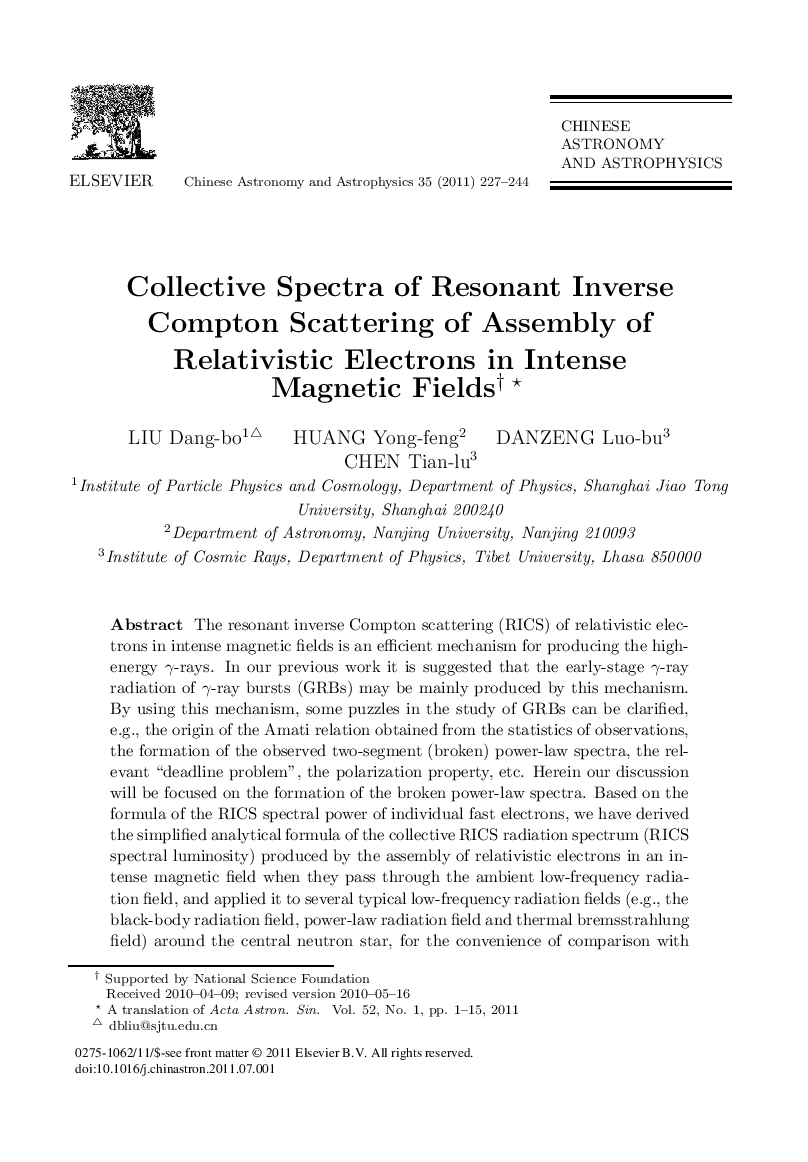| Article ID | Journal | Published Year | Pages | File Type |
|---|---|---|---|---|
| 1772128 | Chinese Astronomy and Astrophysics | 2011 | 18 Pages |
The resonant inverse Compton scattering (RICS) of relativistic electrons in intense magnetic fields is an efficient mechanism for producing the highenergy γ-rays. In our previous work it is suggested that the early-stage γ-ray radiation of γ-ray bursts (GRBs) may be mainly produced by this mechanism. By using this mechanism, some puzzles in the study of GRBs can be clarified, e.g., the origin of the Amati relation obtained from the statistics of observations, the formation of the observed two-segment (broken) power-law spectra, the relevant “deadline problem”, the polarization property, etc. Herein our discussion will be focused on the formation of the broken power-law spectra. Based on the formula of the RICS spectral power of individual fast electrons, we have derived the simplified analytical formula of the collective RICS radiation spectrum (RICS spectral luminosity) produced by the assembly of relativistic electrons in an intense magnetic field when they pass through the ambient low-frequency radiation field, and applied it to several typical low-frequency radiation fields (e.g., the black-body radiation field, power-law radiation field and thermal bremsstrahlung field) around the central neutron star, for the convenience of comparison with the observed spectra. Our calculations indicate that the RICS radiation mechanism has a very high efficiency in the hard X-ray and γ-ray wavebands, if the matching condition (i.e., the condition approximate to resonance) is satisfied, and that independent of the ambient radiation field, the produced spectra are commonly the two-segment power-law spectra. Additionally, it is suggested that the RICS mechanism might be an ideal highly-efficient radiation mechanism for the high-energy emissions (hard X-rays and γ-rays) of the GRBs, soft γ-ray repeated bursts (SGRs) and γ-ray pulsars (GRPs).
